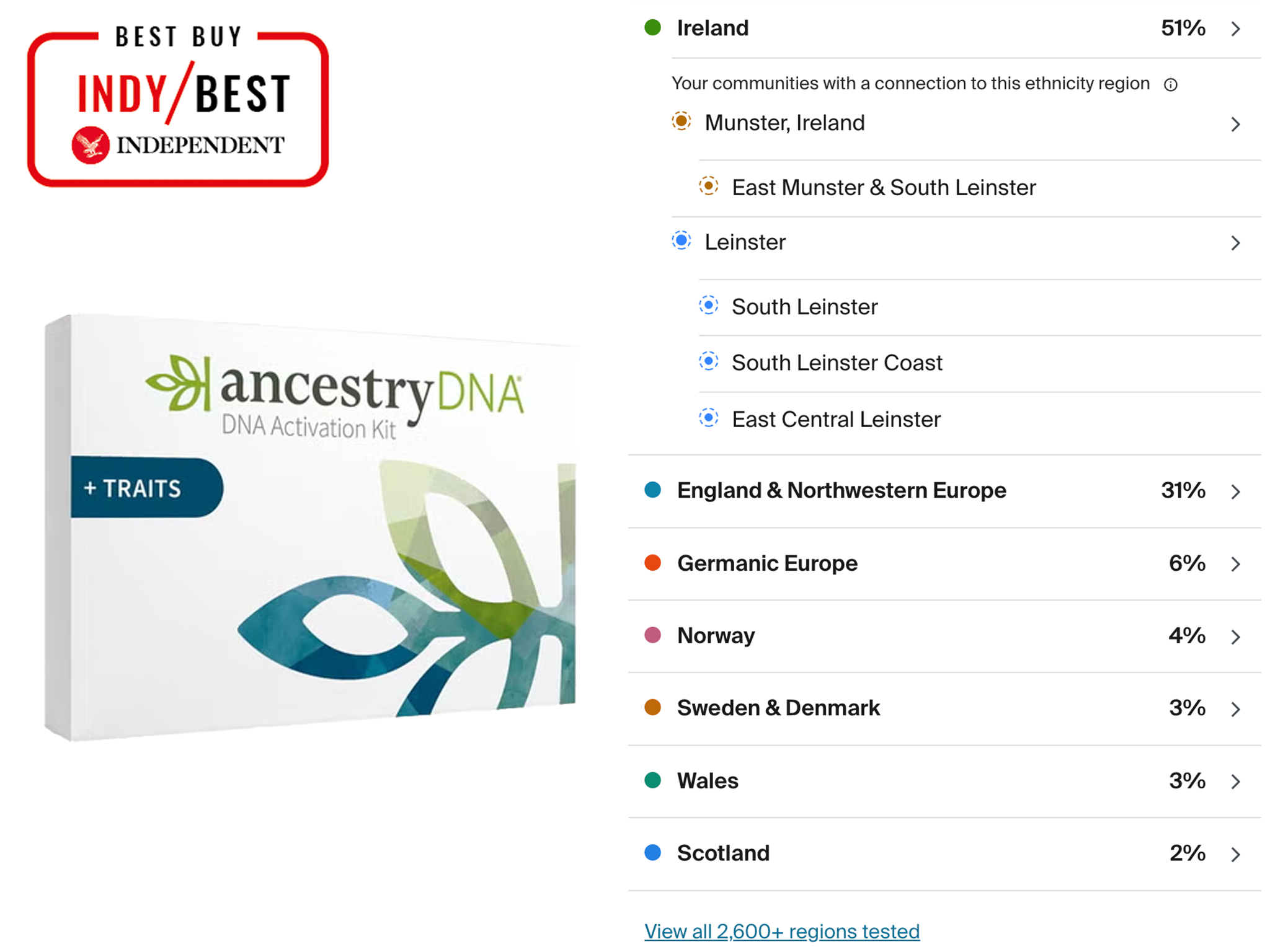
The Independent's journalism is supported by our readers. When you purchase through links on our site, we may earn commission. Why trust us?
Best ancestry DNA tests for exploring your family history, tried and tested
Use a DNA kit to fill out the branches on your tree or discover more about your heritage and genetic make-up
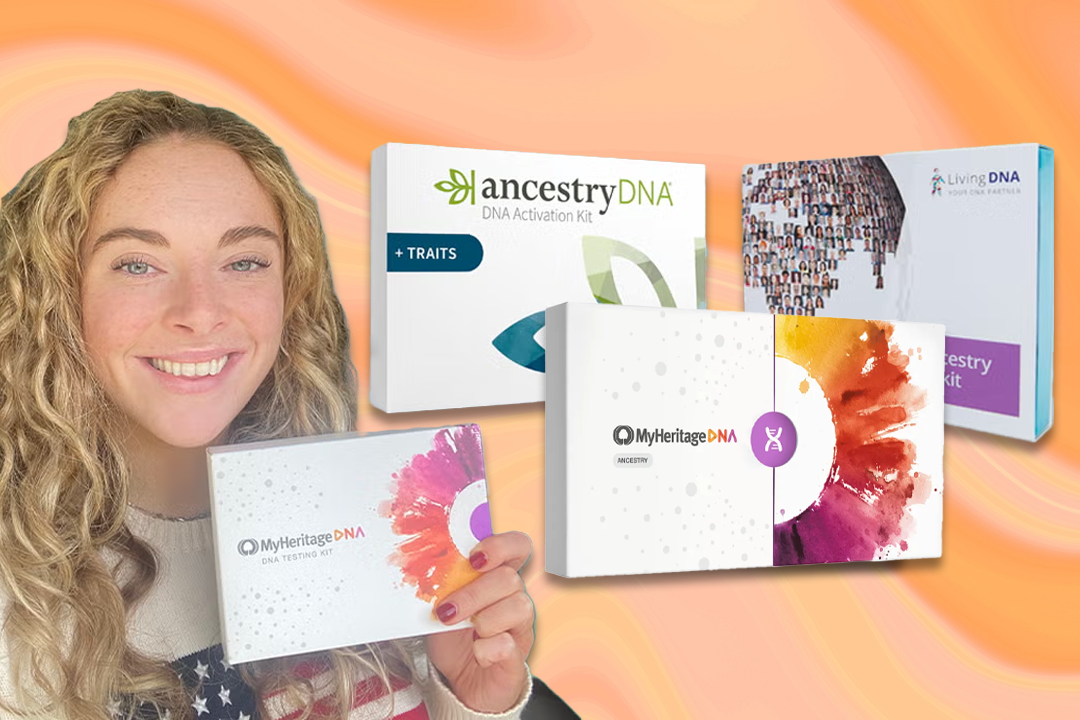
- 1
 2
2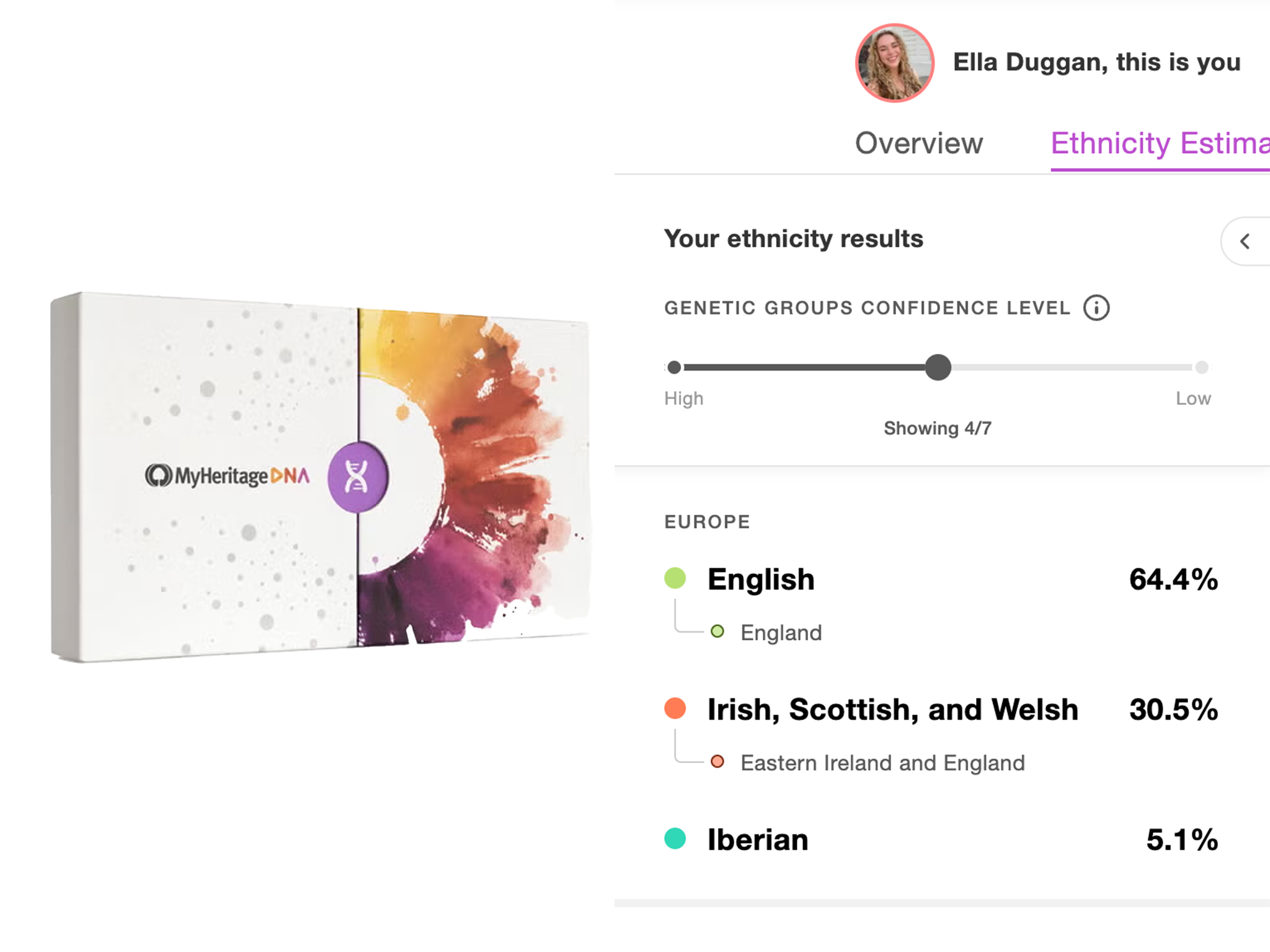
- 3
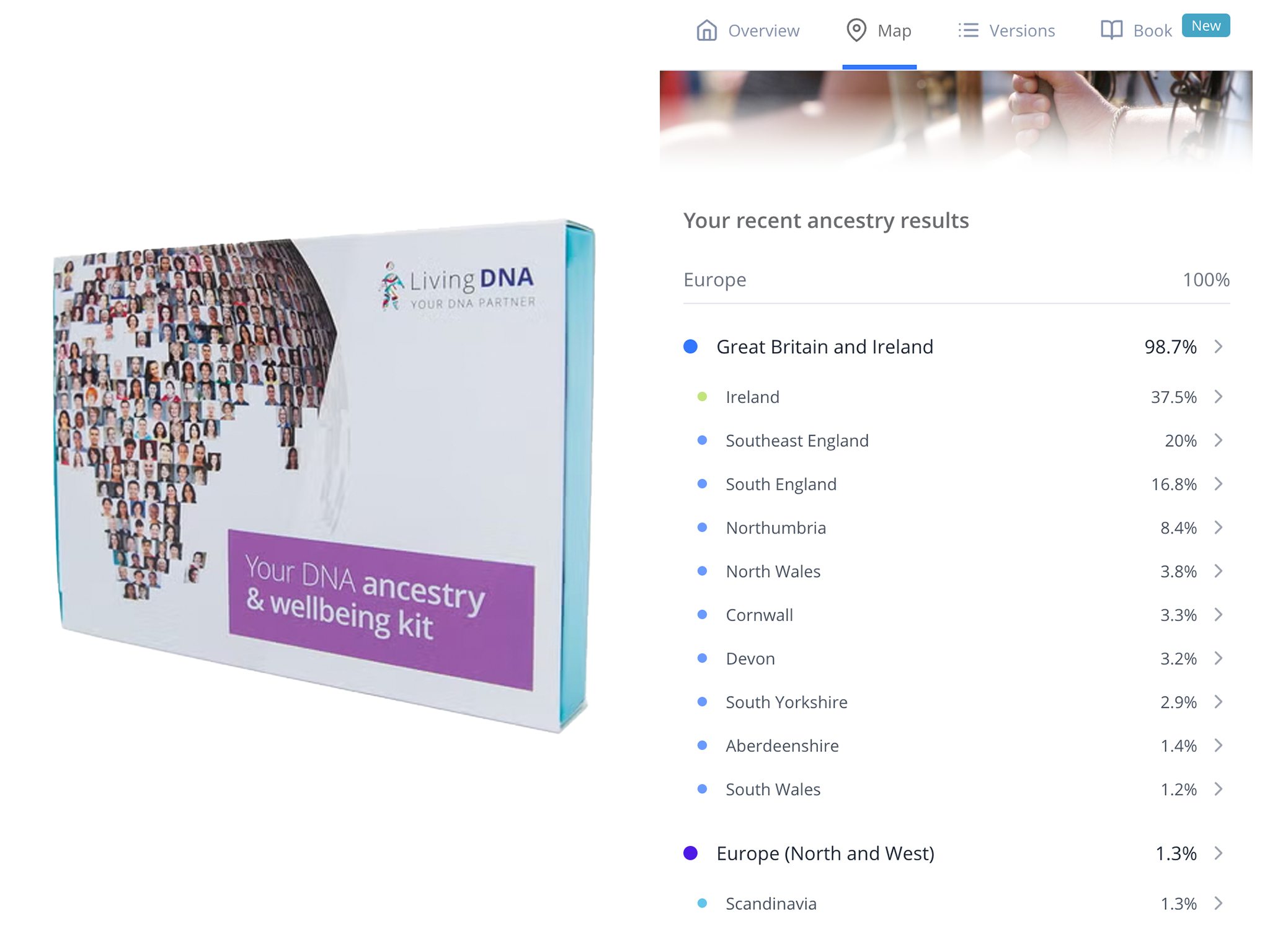
At-home DNA tests have become hugely popular. Offering insights into how we all came to be, the tests give us context for our health and genetic make-up, trace our lineage, and even connect us with distant relatives. Owing to the broad range available, I put the best DNA tests through their paces to find out which ones are worth your money.
With additional costs and automatic subscriptions, signing up for a DNA test can be complicated. But I’ve been blown away by just how much information our DNA can hold. Family mapping and geological heritage are the main features, but tests have diversified in recent years, claiming to be able to tell us everything from our genetic disposition to health conditions to ice cream preferences.
There are several different types of DNA tests, including Y-chromosome, mitochondrial (mtDNA) and autosomal. Louise Hodges from Ancestry.com explained the difference: “Autosomal DNA tests survey a person’s entire genome at over 700,000 locations. It covers both the maternal and paternal sides of the family tree, so it covers all lineages.” Chromosome tests “reflect the direct father-to-son path in your family tree, and the mtDNA test only reflects the direct mother-to-child path in your family tree,” Hodges told The Independent.
She went on to explain how different ‘markers’ in our DNA strands can tell us details about who we are and what we like. “Scientists have found that some markers are associated with specific traits, such as red hair or attached earlobes. We analyse these markers and use them to tell you what your DNA says about each of your traits.”
But what do people really gain by testing their DNA? Hodges believes it offers a “deeper understanding of your heritage and family history sheds light on who you are and can strengthen your identity and sense of belonging”. If you’re curious about your chromosomes, keep scrolling for the tests that are worth taking.
How I tested
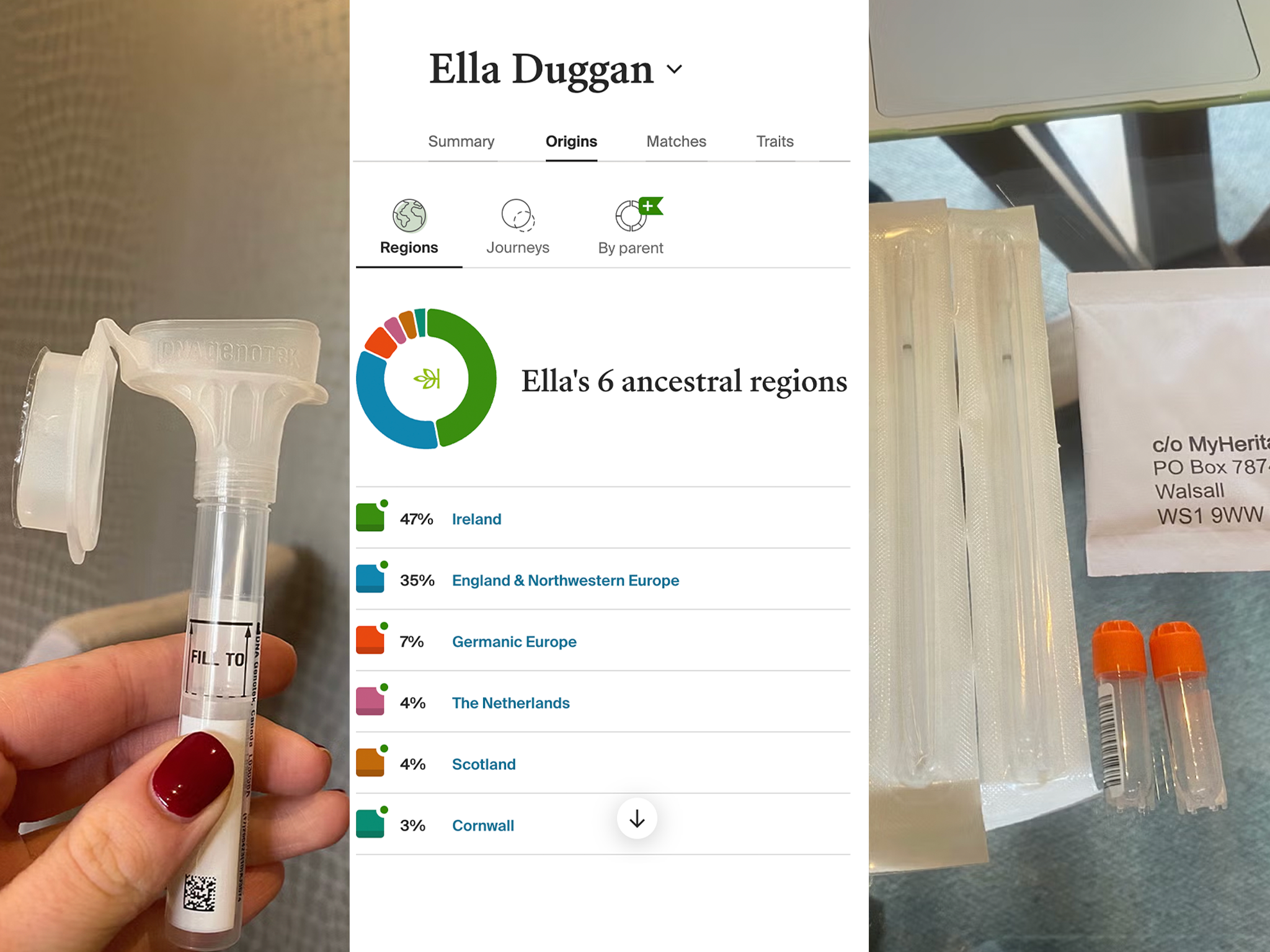
I spent months testing some of the UK’s most popular DNA kits, submitting my own DNA to each one. Throughout the process, I carefully noted how the kits were delivered, how easy they were to use, how long the results took to arrive, and the clarity and range of information provided. I also compared the data from different tests to see which ones were the most detailed and whether the information was consistent across the board. Additionally, I assessed how well the results were presented and how easy they were to understand.
A word of warning: patience is key. On average, my results took around four weeks to arrive, with one test taking as long as two months. Below, you’ll find photos of my results alongside product images.
Why you can trust IndyBest reviews
I dedicated several months to sampling my DNA and submitting it to various testing sites, gaining valuable insight into both the testing process and the complexities of gene mapping. Since 2023, I’ve been writing product reviews for IndyBest, always prioritising efficiency, quality, and value for money.
The best DNA tests for 2025 are:
- Best overall – Ancestry DNA genetic test kit: £94, Ancestry.co.uk
- Best budget buy – MyHeritage DNA testing kit: £35, Myheritage.com
- Best for well-being information – Living DNA wellbeing and ancestry DNA test: £149, Livingdna.com
1Ancestry DNA genetic test kit

- Best: Overall
- Sample method: Saliva sample
- Time for results to come back: Four weeks
- Type of DNA testing: Autosomal
- Why we love it
- Great guides to help you create your own family tree
- Enormous database and access to public records, photos and more
- Found and predicted relatives better than any other option on test
- Extensive genetic traits list
- Constantly growing
- Good price point
- Take note
- Some inaccuracies in genetic traits
I found Ancestry to be a fantastic option for anyone interested in family matching, and the process couldn’t be easier – all it takes is a saliva sample. The accompanying website is sleek, featuring interactive visuals and vibrant diagrams that made exploring my ethnicity estimate simple and engaging. While my Irish and English heritage remained fairly consistent across the DNA kits I tried, Ancestry showed a more varied Scandinavian percentage, which was intriguing.

What really stood out to me was how focused Ancestry is on connection. Beyond genetic traits and ethnicity estimates, the platform can link you with distant relatives — provided they’re also in the system. I also appreciated the highly customizable account settings, which gave me control over how public or private I wanted my profile to be.
One of the most impressive features is Ancestry’s family tree builder, which makes great use of its extensive database of public records. Thanks to this tool – and some helpful suggestions from Ancestry – I was able to trace my Irish roots back to my great-great-grandparents in the mid-1800s, uncovering never-before-seen photographs and public records along the way. It was a fascinating journey that left me feeling more connected to my heritage.
Ancestry also offers a remarkable selection of genetic trait insights – 65 in total. Some of the most interesting ones include coriander aversion, risk-taking tendencies, and whether you’re likely to own a pet or enjoy watching sports. In my case, I’d say about 60 per cent of these traits felt accurate. For instance, I have freckles and curly hair, and I tend to remember my dreams. However, I’m not an endurance runner, I don’t have a cleft chin, and I’m definitely not a morning person.
Overall, I found Ancestry to be a comprehensive and well-rounded DNA test, with its evolving family tree services making the subscription fee feel well worth it.
2MyHeritage DNA testing kit

- Best: Budget buy
- Sample method: Cheek swab
- Time for results to come back: Around eight weeks
- Type of DNA testing: Microarray-based autosomal
- Why we love it
- Did a great job of creating a visual family tree
- Information was easy to understand
- The imagery feature was really lovely
- Take note
- Be weary of extracharges
- Results took a long time to get back
My experience with MyHeritage was a little different from the other DNA tests I tried. It took longer to arrive – about two months – which, as I later found out from MyHeritage, is normal. So, if you’re hoping for quick results, this is something to keep in mind.
The DNA collection process was straightforward – it uses a cheek swab, but unlike some other kits, postage isn’t included, so you’ll need to pay for a stamp to send it back. While the kit price includes a basic subscription, accessing more detailed results requires a monthly subscription. The cost varies depending on the features you want, with the “ultimate package” costing £229 per year.
That said, I was really impressed with the way my geological data was presented. My results appeared in a swirling globe animation, highlighting the previous homes of my ancestors. The expected results showed up – 64 per cent English, 30 per cent Irish, Scottish, and Welsh – but this test revealed something surprising: five per cent Iberian heritage, which wasn’t picked up by the other tests. While that doesn’t necessarily mean the other tests were wrong, it was an interesting discovery.

As for my living family matches, MyHeritage stood out the most. It identified around 10 close relatives, mostly first cousins of my parents. My dad even recognised some names as relatives he'd lost touch with years ago. Thanks to these connections, I could trace detailed family trees going back to the early 1800s, which was fascinating.
Another feature I loved was the ability to animate old photos using AI – a fun and sentimental touch. This is unique among the kits I tested - you won’t get this from Ancestry or Living DNA.
Your DNA data is not sold, licensed, or shared with third parties without your explicit consent, so make sure to read all the terms and conditions when signing up. You can control how visible or easy to contact you are via account settings, and much like the other sites, you can have your data deleted at any time. However, if you want to have your DNA destroyed, you must email MyHeritage directly via its customer support channels.
While the MyHeritage website itself is quite basic and doesn’t provide DNA insights into health or genetic traits compared to the others in this list, I found it exceptional for building detailed, easy-to-follow family trees.
I also came across the MyStories service (£79 from Mystories.com), a year-long membership that sends weekly prompts and questions to you or a chosen family member. At the end of the year, these stories and memories are curated into a beautiful keepsake book – perfect for a meaningful gift.
3Living DNA wellbeing and ancestry DNA test

- Best: For wellbeing information
- Sample method: Cheek swab
- Time for results to come back: Four weeks
- Type of DNA testing: Autosomal, Y-chromosome and mitochrondrial
- Why we love it
- Extremely detailed and informative throughout
- Easily to follow visual aids
- Useful wellbeing advice
- Information relating back to Ice Age ancestors
- Take note
- Weaker family matching capabilities compared with other tests
With this DNA test, both the kit and my results arrived quickly. What really impressed me was the detailed breakdown of where in the UK my DNA could be traced. Each region was listed with its own percentage, and unsurprisingly, southeast England, where I was born and raised, had the highest score.
Living DNA was also the first test to introduce me to my haplogroup – a group of people who share a common ancestor from up to 50 generations ago. The Living DNA mitochondrial test traced this group back to my earliest maternal ancestors. I learned that my haplogroup, U5a, is believed to have emerged during the coldest point of the Ice Age around 22,000 years ago – sounds like a tough bunch to me.
One of Living DNA’s standout features is its well-being insights, which focus on identifying potential deficiencies rather than medical conditions. For example, I was told I may be low in vitamins B12 and A, with helpful advice to increase my intake of milk, eggs, cheese, or supplements. I also learned I’m genetically not very strong, so the test recommended focusing on light resistance exercises with increased reps for better results. There’s also an option to sign up for a customised supplement subscription tailored to your results.

This test was less impressive than the other two at family matching. With a smaller and less active database than the other, more well-known sites, my results only highlighted a handful of third and fourth cousins. Despite this, I loved how clear and engaging the ancestor mapping was. One feature I found fascinating was the ability to trace the migration of my maternal ancestors, who are believed to have been among the first groups to migrate out of Eastern Africa almost 70,000 years ago.
Living DNA does not share your data with third parties without your explicit consent. However, they may share aggregate data, but only in a manner where individuals cannot be identified, so keep that in mind. DNA-matching services are optional, and users can manage their preferences through account settings. The site retains your DNA sample for six months after analysis. You can request the destruction of your sample at any time, even while maintaining an account to receive updates.
For those with a deeper interest in ancestry, Living DNA also offers extra packages that attempt to identify Viking, Neanderthal, and ancient world connections in your DNA.
If you’re only interested in certain results, you can choose to purchase the ancestry or well-being tests separately for a lower cost, which adds some nice flexibility.
DNA tests FAQs
What are the different types of DNA tests?
There are three main types of DNA tests:
- mtDNA or mitochondrial DNA testing provides information about your maternal ancestry line. Both male and female children inherit mitochondrial DNA, but only females can pass it on to their own children. However, since everyone has mitochondria, people of all genders can take mtDNA tests.
- Y-DNA testing provides information about your paternal ancestry line. Because it tests the Y chromosome, which women don’t have, it’s only available to men, although women can still derive helpful details from the Y-DNA tests of their fathers, uncles or brothers, for instance.
- Autosomal chromosomes contain segments of DNA you share with everyone you’re related to, so, people of all genders can take these tests, and they are the most common types of test available in the home DNA kit market.
How accurate are home DNA tests?
While they can provide lots of fascinating data and reliable insights, it’s important not to take your home DNA test results as a completely precise representation of your past. The data sets used in these assessments (which involve comparing your results to reference populations of thousands of other people, to determine your information) are still growing and evolving – you might even get an update on your results months after you’ve taken the original test, as more and more people continue to participate.
As they’re based on estimates, I suggest treating home DNA tests as a fun investigation to get to know your family history a little better rather than a to-the-letter representation of everything that’s ever happened in your gene pool.
DNA tests and privacy
Any DNA test you order will ask you to agree to a number of terms and conditions about how your sample and subsequent information will be used, and many give you the choice of opting in to or out of certain data sharing. Read the information carefully to ensure you’re comfortable with the way your sample will be held and compared.
Consider what you might discover
Ancestry DNA tests – especially those that offer health screenings as part of the package – can reveal information that could prove distressing or that you wish you hadn’t found out. Of course, a result that indicates an increased risk of a particular illness doesn’t automatically mean you’ll get it, but you may find it playing on your mind.
Equally, you may uncover secrets in your family’s past that they’d rather you didn’t know. I don’t say this to discourage you from taking a test but rather to ensure that you fully understand what’s involved and how it could affect you.
The verdict: DNA tests
My favourite had to be Ancestry, with Living DNA close behind. Ancestry’s access to public records, family stories and photos was unmatched, while the simplicity of Living DNA appealed to me because I found the personalised well-being advice useful and relevant. I was disappointed by how slow MyHeritage was but was still impressed by the close relatives of mine it was able to find.